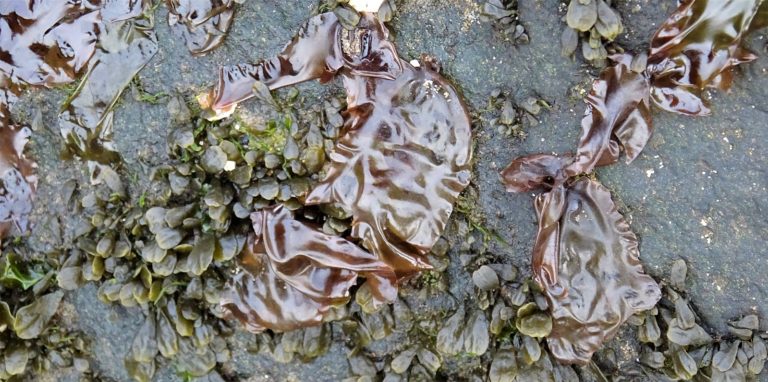pun’hwe’num’ – is the term we use in Stz’uminus for the month of May. This is named for speenhw “blue camas” [Camassia leichtlinii (Baker) S. Wats. and/or C. quamash (Pursh) Green. Some Elders say tum’peenhw – tum’ – time of camas, or tum’pe’un’hw – time of getting camus. This was an important starch food for our people. It was gathered from island bluffs and high fields and baked, steamed or roasted. It has a sweet taste similar to marshmallows. There were strict rules about who could harvest where and when. And our ladies tended the camas plots to make sure that they thrived. The dried camas would be put away in the winter box and used in soups during the winter time, along with wild onions, and wapato.
Roxanne Seymour from shtsum’inus on camas
Featured Plant
lhuq’us | Seaweed
Edible seaweed is a very thin, membranous alga that ranges in colour from olive-green to brownish-purple. It grows attached to rocks in the intertidal and upper sub-tidal zones along the coast.
Edible seaweed is gathered from the rocky places where it grows, dried and eaten as an important sea vegetable.
